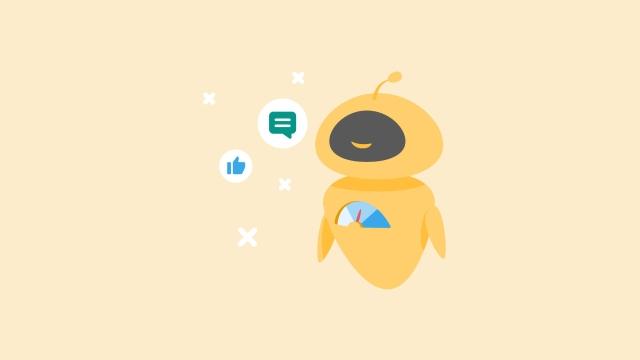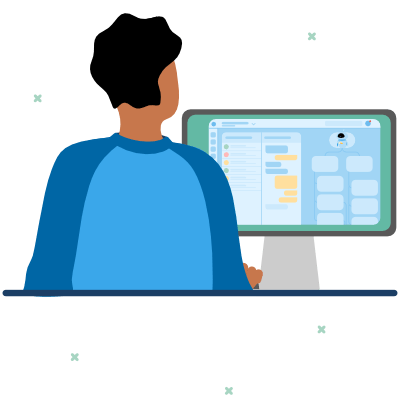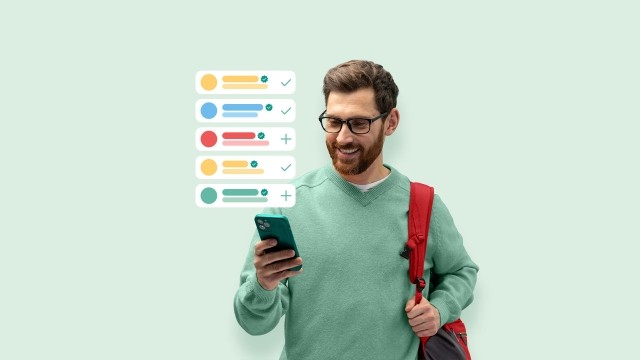In this article:
- Understanding the benefits of integrating a WhatsApp Bot with your CRM
- Choosing the right WhatsApp Business account
- Selecting the right CRM System
- Choosing the right WhatsApp bot
- Integrating your WhatsApp bot with CRM systems
- Configuring your WhatsApp bot
- Use cases for integrating a WhatsApp bot with CRM
- Ensuring data privacy and security
- Testing your WhatsApp bot
- Launching and monitoring your WhatsApp bot
- Measuring the impact
- Conclusion
Using a WhatsApp bot is already the first step to scaling your business with WhatsApp. Integrating the WhatsApp bot with your CRM systems, ho wever, is what'll make it really powerful. In this guide, we explain the benefits of a CRM-bot integration, how it works, and show you use cases along the customer journey.
Did you know that 80% of WhatsApp messages are read in five minutes, while it takes people on average ten hours to reply to an e-mail? Customers have long moved their conversations from e-mail, phone, and even social media platforms to messaging apps. Now, they expect the same from businesses.
But if you want to be successful on WhatsApp as a business, you have to make sure that the customer experience is at least as good as on the other channels. A WhatsApp bot is already an important first step to offering 24/7 availability and faster help. Integrating the bot with your CRM systems, however, is what'll make your WhatsApp interactions stand out from the competition.
Understanding the benefits of integrating a WhatsApp Bot with your CRM
Before we delve into the technical aspects of integration, it's essential to grasp the advantages of combining a WhatsApp bot with your CRM system.
Improved customer engagement
WhatsApp is one of the most widely used messaging platforms, and customers prefer using it for quick and convenient communication. Integrating a bot into WhatsApp allows businesses to engage with customers on their preferred channel, enhancing the overall customer experience.
Enhanced customer support
A WhatsApp bot can provide instant responses to common customer queries, freeing up human agents for more complex issues. This leads to quicker issue resolution and improved customer satisfaction.
Streamlined data collection
Integrating your bot with CRM enables you to gather valuable customer data automatically. This data can be used to personalize interactions, target marketing campaigns, and improve your products and services.
Efficient automation
Bots can handle routine tasks such as appointment scheduling, order tracking, and FAQs, allowing your team to focus on higher-value tasks. Automation reduces operational costs and improves efficiency.
Choosing the right WhatsApp Business account
CRM integration with WhatsApp requires companies to use the WhatsApp Business API (WhatsApp Business Platform). The free WhatsApp Business app doesn't provide possibilities for neither chatbot nor CRM integration.
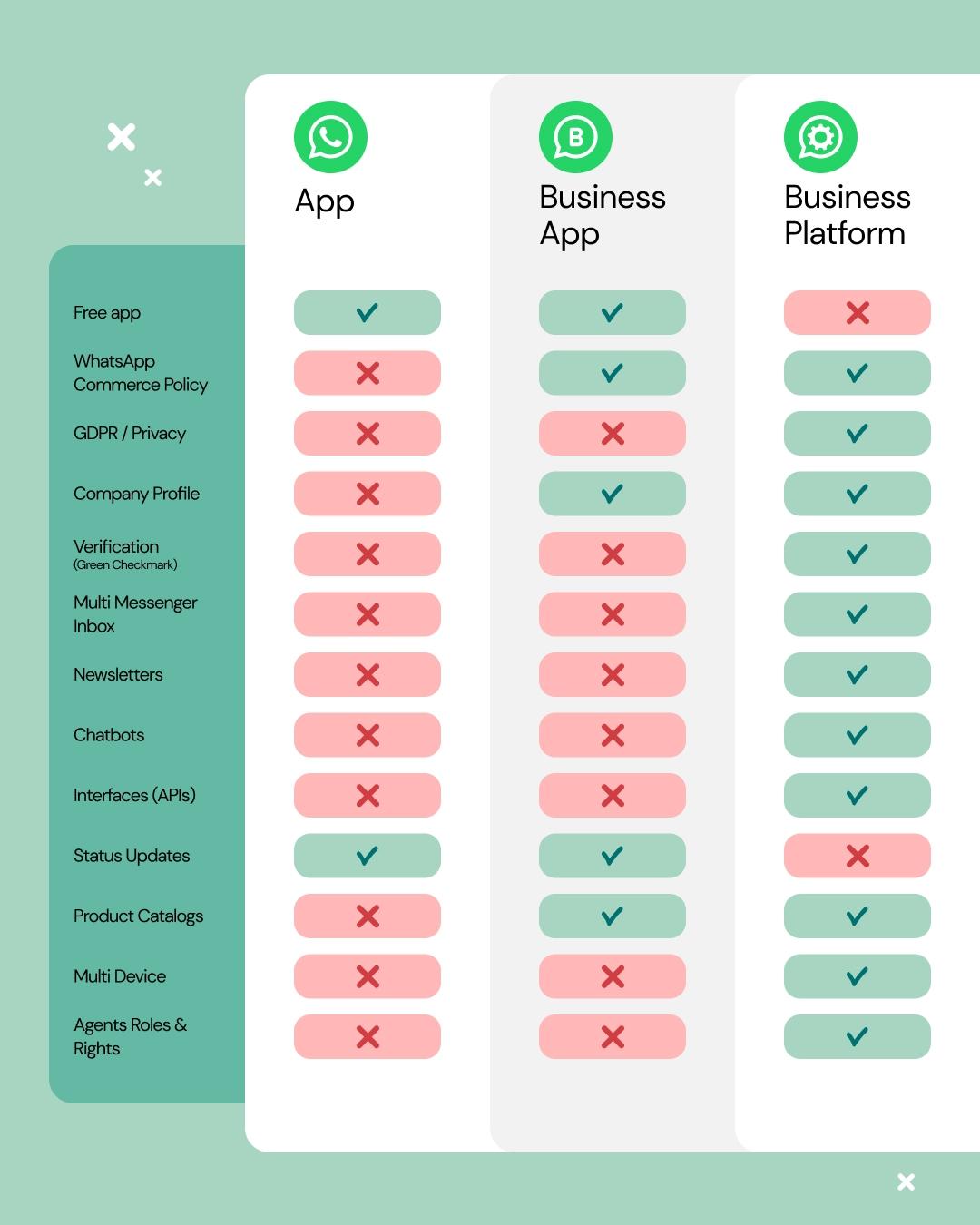
So, the first step is to set up a WhatsApp Business API account. Keep in mind that the API doesn't have a user interface. So, you either have to set one up yourself (requires IT skills) or use a pre-designed WhatsApp Business software, such as Sinch Engage that'll provide this for you.
Selecting the right CRM System
Choosing the right CRM system is the next important step in integrating a WhatsApp bot effectively. Here's what you need to consider.
CRM system requirements
Depending on your needs, your CRM system should support APIs and webhooks, which are essential for communication between the WhatsApp bot and your CRM.
Additionally, it should have robust data management capabilities to store and manage customer data efficiently.
Compatibility with WhatsApp
Ensure that your chosen CRM system can connect seamlessly with WhatsApp. Many CRMs have dedicated integrations or plugins for popular messaging platforms, making the integration process smoother.
Make sure to check thoroughly because some CRM systems only offer limited options when combined with messaging apps as they were originally designed to work with e-mail programs.
Choosing the right WhatsApp bot
Selecting the right WhatsApp bot for your business is also crucial. Here are some considerations.
Pre-built bots vs. custom development
You can opt for pre-built WhatsApp bot solutions or develop a custom bot tailored to your business needs. Pre-built bots are quicker to deploy, while custom bots offer more flexibility and scalability.
With Sinch Engage, we offer a chatbot builder where you can actually do both, even without coding skills.
Features and capabilities
Consider the features and capabilities your bot should have. For many use cases, a simple FAQ bot can be enough. In other, more complex environments, you might need more advanced capabilities, such as natural language processing, AI-driven responses, and multi-channel support. Your bot should align with your business goals and customer expectations.
🤖Check out your options for an AI-based chatbot at Sinch Engage.
Integrating your WhatsApp bot with CRM systems
Now, let's get into the technical aspects of integration. There are several methods to connect your WhatsApp bot with your CRM system
API Integration
API (Application Programming Interface) integration allows your bot and CRM system to communicate in real-time. You'll need to work with your CRM provider to access their API documentation and integrate it with your bot. So, this approach requires IT resources.
Webhooks
Webhooks are a way to receive real-time updates from your CRM system to your WhatsApp bot. When specific events occur in the CRM, it triggers actions in the bot. This method is ideal for event-driven interactions. This could be a good option for e-commerce, for instance to send a reminder to stock up on an item after a certain time has passed after the purchase.
However, this might not work for your business use case, especially when you also want to include an agent handover, or if you want to use your chatbot for marketing or non-event-based interactions.
Important: WhatsApp requires a bot to agent handover option!
Third-party integration platforms
Some platforms, such as Sinch Engage, offer out-of-the-box integrations for both WhatsApp and CRM systems. These platforms can simplify the integration process, making it more accessible for businesses without extensive technical resources.
Configuring your WhatsApp bot
Once your WhatsApp bot is connected to your CRM system, you need to configure it for optimal performance.
User-friendly onboarding
Ensure that the onboarding process for your WhatsApp bot is user-friendly. Guide customers through their first interactions to help them understand how to use the bot effectively.
Conversation flow design
Design intuitive conversation flows that lead customers to their desired outcomes. Use decision trees and conditional logic to provide accurate and helpful responses.
Data collection
Integrate data collection into the conversation flow. Ask for relevant information without overwhelming the customer, and store it in your CRM for future use.
Multilingual support
If your business serves a global audience, consider providing multilingual support in your WhatsApp bot to cater to a diverse customer base.
Use cases for integrating a WhatsApp bot with CRM
Marketing: Lead generation and personalized promotional messages
Guide users trough a click-to-WhatsApp link or QR code directly into your WhatsApp business chat. Here, you can set up a chatbot to gather some basic information, such as:
- What services or products they're interested in
- Basic contact information
The bot can immediately save this information in your CRM system, and either make it available to your team or even guide the users further down the customer journey, by, for example, leading them to a product configuration or allowing them to set up an appointment.
Or, think of an HR recruitment bot on WhatsApp! Here, interested candidates could already interact with a bot to leave contact information, say what jobs they want to apply for, or even upload their CV.
Another interesting marketing use case is for WhatsApp bots to use existing information in your CRM, such as birthdays or purchase history, and send automated personalized promotional offers.
Sales: Making it easier for customers to complete a purchase
If customers can customize a product easier, set up an appointment faster, or just re-order an item without any human help, they're more likely to make a purchase.
A WhatsApp bot that's integrated with your CRM can be an ideal shopping assistant. For instance, it can make shopping recommendations based on the customer's information, or suggest a pick-up location that's closer to the customer's home.
And if you offer a service, the bot can actively reach out to existing customers and send them reminder to schedule their upcoming car service, hair appointment, or online class.
Customer service: Faster and more personalized service
A WhatsApp bot that's connected to your CRM system can be used in customer service as a first-level bot for collecting basic user information.
- Name, account number, etc.
- Problem that customer faces (return, service malfunction, etc.)
- Customer history
- Questions they have
- ...
This information can be gathered in minutes, and with this, the WhatsApp bot can also guide the customer to the right customer service agent, if necessary. When taking over the conversation, the agent then already has all the basic data, and can help the customer faster, without having to ask for the information again.
By using a bot to collect data, information and customer interactions also become more transparent throughout the organization, and information doesn't get lost anymore.
Customer retention: More loyalty with a personalized bot
A WhatsApp bot that's integrated with your CRM is also very beneficial for customer retention. It can not only re-initiate a conversation easily, but also add a personal touch to it, which'll keep customers engaged and content.
Why not send existing customers reminders to stock up on a product or even send them special discount codes for being a loyal customer? Combining an automated service with personal information will improve your customer experience, increase loyalty, and get existing customers to shop again.
Another idea could be to use a WhatsApp chatbot that can access the CRM system to automatically ask customers for feedback. It can then even be programmed to guide an unhappy customer to a service agent and happy ones to a review website where they most likely leave a good review.
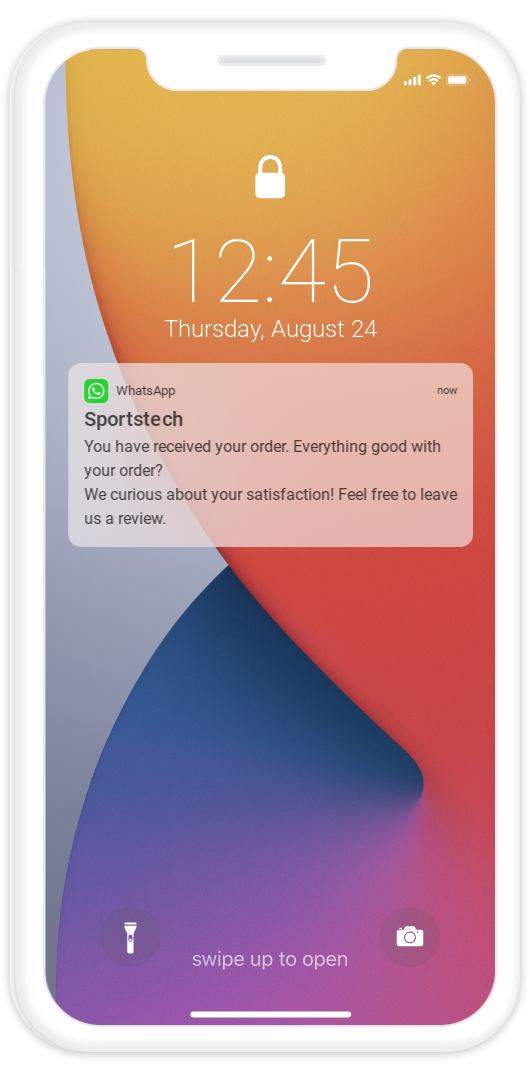
Ensuring data privacy and security
Data privacy and security are paramount in any CRM and WhatsApp bot integration. After all, the bot is handling sensitive user information which requires special processing by several data protection laws.
Compliance with GDPR and other regulations
Ensure that your bot and CRM system comply with data protection regulations like GDPR. Make sure to obtain customer consent for data collection and processing, and be transparent about what you're collecting the data for.
Encryption and data storage
Encrypt data that's transmitted between your bot and CRM, and store customer data securely. Regularly audit and update security protocols to safeguard sensitive information.
Testing your WhatsApp bot
Before launching your WhatsApp bot, rigorous testing is crucial.
Functional testing
Test the bot's functionality, ensuring that it provides accurate responses and follows the desired conversation flows.
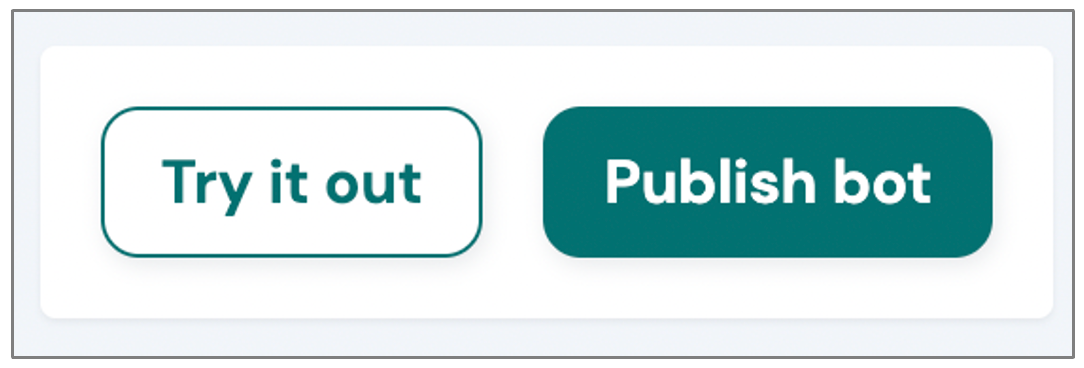
User acceptance testing
Before you deploy your bot to all of your customers, it's a good idea to do some beta testing first to make sure everything works as planned. Engage a group of users to evaluate the bot's performance and gather feedback. Use this feedback to make necessary improvements.
Launching and monitoring your WhatsApp bot
Once your bot passes testing, it's time to launch it and monitor its performance.
Deployment
Deploy your bot and monitor its interactions. Be prepared to handle any issues that arise during the initial phase.
Performance monitoring
Continuously monitor the bot's performance, gather data, and analyze user interactions to identify areas for improvement.
Continuous improvement
Use the data and feedback collected to make ongoing improvements to your bot, enhancing its functionality and user experience.
Measuring the impact
To gauge the success of your WhatsApp bot integration, track key performance indicators (KPIs):
Key performance indicators (KPIs)
Measure KPIs like response time, resolution rate, customer satisfaction, and conversion rates to evaluate the bot's impact on your business.
Feedback and customer surveys
Collect feedback from customers and conduct surveys to understand their perception of the bot's effectiveness and usability.
Conclusion
Integrating a WhatsApp bot with your CRM system can be a game-changer for your business in terms of customer engagement, support, and data collection. However, it requires careful planning, technical expertise, and a commitment to ongoing improvement.
By selecting the right CRM system, WhatsApp bot, and integration method, and by prioritizing data privacy and security, you can create a powerful tool that enhances your customer interactions and helps you stay ahead in the competitive business landscape.
As technology and customer expectations evolve, businesses that embrace these innovations will be better positioned to succeed in the modern marketplace.
